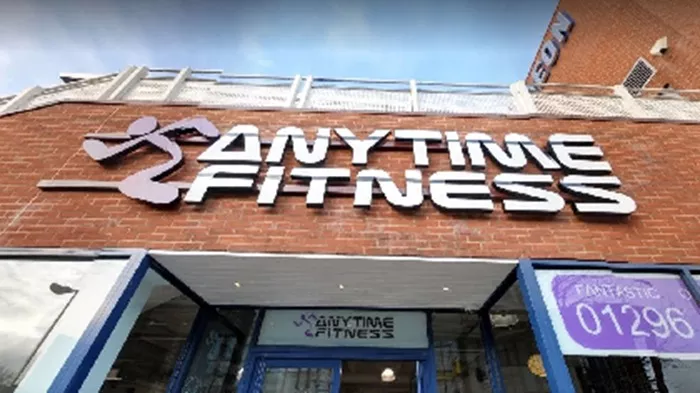Burning fat is a common goal for many individuals looking to improve their health, fitness, and overall well-being. While there are numerous ways to achieve this, one of the most accessible and effective methods is by using a treadmill. Treadmills offer a controlled environment for cardiovascular exercise, making it easier to regulate speed, intensity, and duration. But the question remains: how can you burn fat most efficiently on a treadmill? This article explores various techniques, tips, and strategies for maximizing fat loss while using a treadmill, so you can achieve your fitness goals faster and more effectively.
Fat Loss and the Role of Cardio
Before diving into how to burn fat fast on a treadmill, it’s important to understand the basics of fat loss. Fat loss occurs when the body burns more calories than it consumes, creating a calorie deficit. When you engage in physical activity like treadmill exercise, your body uses energy from various sources, including carbohydrates and fat. The key to burning fat is to ensure that your body taps into fat stores as an energy source.
Cardiovascular exercise, such as running or walking on a treadmill, increases your heart rate and helps you burn calories. The intensity and duration of your workout play a significant role in how much fat you burn. While you can burn fat during any cardiovascular workout, certain strategies can help speed up the process and ensure that you’re maximizing fat loss.
The Science of Burning Fat on the Treadmill
When it comes to fat burning, there are several key factors to consider. The most important one is your heart rate. Your body burns fat most efficiently when it’s working at a moderate intensity, where it can sustain the effort for an extended period. This intensity is usually referred to as the “fat-burning zone,” which is roughly 60-70% of your maximum heart rate. This zone allows your body to tap into fat stores for energy while also preventing premature fatigue.
However, there’s more to fat loss than just staying in the fat-burning zone. High-intensity exercise, such as interval training or running at a faster pace, can also trigger a process called excess post-exercise oxygen consumption (EPOC). This process means that your body continues to burn calories at an elevated rate even after you’ve finished your workout. This “afterburn effect” helps accelerate fat loss, making high-intensity treadmill workouts an excellent way to burn fat faster.
How to Burn Fat Fast on the Treadmill: Effective Strategies
1. Incorporate Interval Training
Interval training is one of the most effective methods for burning fat quickly on a treadmill. This type of workout alternates between periods of high-intensity exercise and low-intensity recovery. For example, you might sprint for 30 seconds, followed by 1 minute of walking or light jogging. This alternating intensity forces your body to work harder and burns more calories both during and after the workout.
Studies show that interval training can lead to greater fat loss than steady-state cardio. The reason for this is that the intense bursts of activity increase your heart rate significantly, which leads to a higher calorie burn and more fat oxidation. Additionally, the afterburn effect from interval training ensures that you continue to burn calories long after your workout has ended.
To get started with interval training on a treadmill, follow these simple steps:
- Warm up for 5-10 minutes at a moderate pace.
- Sprint or run at a fast pace for 20-30 seconds.
- Slow down to a walking pace or light jog for 1-2 minutes.
- Repeat the cycle for 20-30 minutes.
- Cool down with a 5-minute walk.
The key to interval training is to push yourself during the sprinting phases while allowing yourself enough time to recover during the slower phases.
2. Increase the Incline
Running or walking on a flat surface can be effective for burning calories, but increasing the incline on your treadmill can significantly enhance your fat-burning results. Walking or running uphill engages different muscle groups, including your glutes, hamstrings, and calves, which require more energy to work. This increased muscle engagement raises your heart rate and boosts your overall calorie burn.
By walking or running on an incline, you simulate the effects of uphill terrain, which forces your body to work harder than it would on a flat surface. The higher the incline, the more energy your body will need to expend. This leads to a higher calorie burn and, ultimately, more fat loss.
To incorporate incline training into your treadmill routine:
- Start by setting the treadmill incline to a moderate level (around 5-6%).
- Walk or run at this incline for 3-5 minutes.
- Gradually increase the incline to a higher level (up to 10-15%) as you progress through your workout.
- Alternate between moderate and steep inclines throughout your session.
Incline walking or running is particularly effective for beginners or those who may struggle with high-intensity running, as it still offers a challenging workout without the impact on the joints that running can sometimes cause.
3. Steady-State Cardio for Longer Durations
While interval training and incline workouts can help burn fat quickly, steady-state cardio is still an effective option for fat loss, particularly for those who prefer longer, lower-intensity workouts. Steady-state cardio involves maintaining a constant pace throughout your entire workout, which allows your body to burn fat for an extended period.
For steady-state cardio, aim for a moderate pace that keeps your heart rate within the fat-burning zone (60-70% of your maximum heart rate). Walking or light jogging on the treadmill for 45-60 minutes can help you burn a significant number of calories and fat.
To get the most out of steady-state cardio:
- Set a goal for the duration of your workout (e.g., 45-60 minutes).
- Maintain a pace that keeps your heart rate steady but does not cause fatigue too quickly.
- Ensure proper form and posture throughout the session to maximize calorie burn.
Steady-state cardio is an excellent option if you’re looking for a lower-impact way to burn fat, and it can be an ideal addition to a well-rounded fitness routine.
4. Track Your Heart Rate
To effectively burn fat, it’s important to monitor your heart rate and ensure you’re working within the optimal range. As mentioned earlier, the fat-burning zone is typically around 60-70% of your maximum heart rate. To determine your maximum heart rate, subtract your age from 220. For example, if you’re 30 years old, your maximum heart rate would be 190 beats per minute (220 – 30 = 190).
Once you know your target heart rate range, use the treadmill’s heart rate monitor (or wear a fitness tracker) to track your progress. Staying within this range ensures that your body is primarily using fat as a fuel source. If your heart rate exceeds this zone, you may be relying more on carbohydrates for energy, which can limit the fat-burning effect.
5. Consistency is Key
While treadmill workouts are highly effective for burning fat, consistency is essential to see long-term results. Fat loss occurs over time, and to burn fat effectively on the treadmill, you need to make exercise a regular part of your routine. Aim for at least 3-5 treadmill workouts per week, with a combination of high-intensity interval training, incline walking, and steady-state cardio.
Incorporating variety into your workouts will keep things interesting and challenge your body in different ways. You can also combine treadmill exercises with strength training and a healthy diet for maximum fat loss.
Additional Tips to Maximize Fat Burning
In addition to the treadmill exercises mentioned above, there are other strategies you can use to enhance fat burning:
Fuel Your Body Properly: Eating a balanced diet with adequate protein, healthy fats, and complex carbohydrates will help fuel your treadmill workouts and aid in recovery.
Stay Hydrated: Dehydration can impair your workout performance, so it’s important to drink enough water before, during, and after exercise.
Get Enough Sleep: Quality sleep is essential for fat loss, as it helps regulate hormones related to hunger and metabolism.
Monitor Your Progress: Tracking your workouts, diet, and results will keep you motivated and allow you to make adjustments as needed.
Conclusion
Burning fat on the treadmill is an effective and accessible way to achieve your fitness goals. By incorporating strategies such as interval training, increasing the incline, and tracking your heart rate, you can accelerate fat loss and maximize your results. Consistency, along with a balanced diet and proper hydration, will help you stay on track and make steady progress toward your fat-burning goals. Whether you’re a beginner or an experienced runner, the treadmill offers endless opportunities to challenge yourself and burn fat efficiently.
Related Topics

































